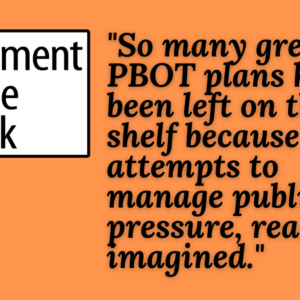Not to be confused with the City of Portland’s Bicycle Master Plan, the Oregon Department of Transportation (ODOT) has its own Bicycle and Pedestrian Plan.
Here’s how ODOT describes it:
“Last updated in 1995, the OBPP (they love acronyms!) is part of the long-range, statewide Oregon Transportation Plan. It governs the department’s planning, policy and design requirements for walkways and bikeways. It also serves as a technical, planning and policy resource for others interested in biking and walking.”
According to an ODOT press release, proposed changes to the technical/design section of their plan are up for public comment.
To read the changes and find out how to comment, check out this page on the ODOT website.







Thanks for reading.
BikePortland has served this community with independent community journalism since 2005. We rely on subscriptions from readers like you to survive. Your financial support is vital in keeping this valuable resource alive and well.
Please subscribe today to strengthen and expand our work.
My only recomendation to ODOT is that human beings should not be considered secondary to traffic flow.
This biggest hole in this document is the allowance of 2 foot shoulders on rural roads with average daily traffic less than 400 (pg 4, chapter 1). By their definition, the shoulder is too narrow for bike use, but the low traffic use will allow sharing the roadway safely. Anyone who has ridden these roads know cars are buzzing by at 60+ mph in these situations. This minimum shoulder width should be 4 feet in all situations.